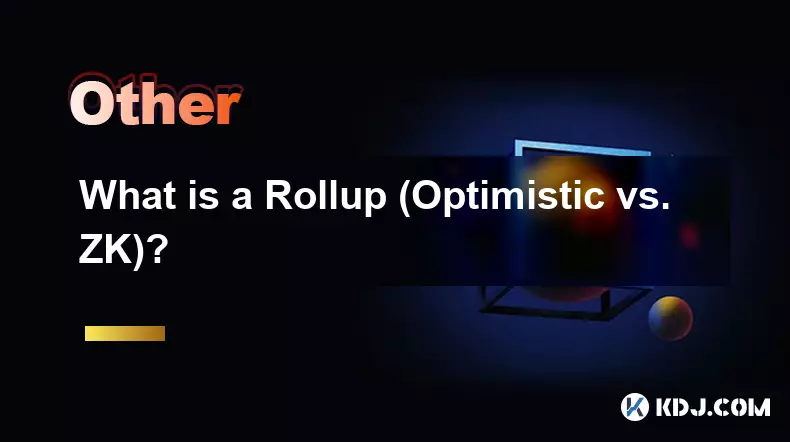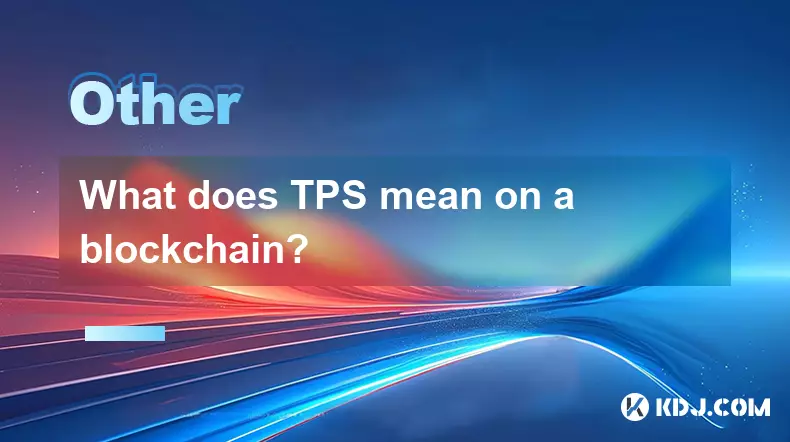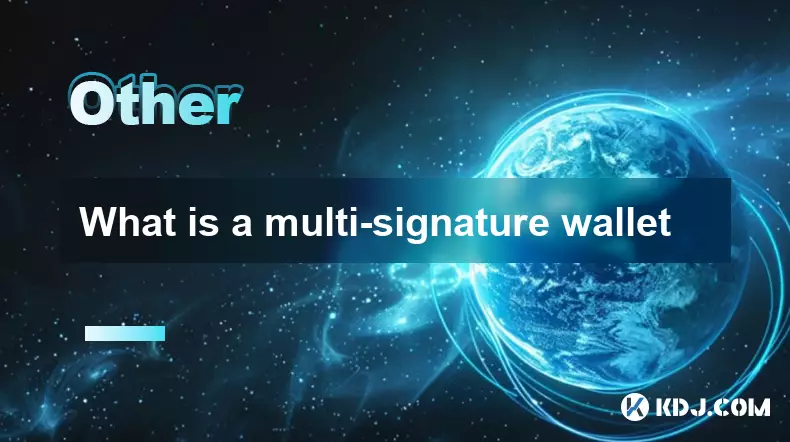-
 bitcoin
bitcoin $123963.239194 USD
1.37% -
 ethereum
ethereum $4529.082464 USD
1.07% -
 xrp
xrp $2.983640 USD
0.71% -
 tether
tether $1.000287 USD
0.02% -
 bnb
bnb $1179.874393 USD
2.99% -
 solana
solana $230.633678 USD
1.55% -
 usd-coin
usd-coin $0.999835 USD
0.03% -
 dogecoin
dogecoin $0.254240 USD
1.34% -
 tron
tron $0.341176 USD
0.15% -
 cardano
cardano $0.842285 USD
0.52% -
 hyperliquid
hyperliquid $48.537896 USD
-0.86% -
 chainlink
chainlink $21.863092 USD
-0.84% -
 ethena-usde
ethena-usde $0.999743 USD
-0.07% -
 sui
sui $3.579561 USD
-0.18% -
 stellar
stellar $0.403418 USD
2.67%
What is Celestia Data Availability for blockchain?
Celestia enhances blockchain scalability and security with its modular architecture and Data Availability Sampling, reducing node requirements and improving efficiency.
Apr 14, 2025 at 03:35 am

Celestia Data Availability is a crucial component of the Celestia blockchain network, designed to enhance the scalability and efficiency of blockchain systems. Data availability refers to the ability of a blockchain to ensure that all necessary data is accessible to all nodes on the network, which is essential for maintaining the integrity and security of the blockchain. Celestia's approach to data availability is unique and aims to solve some of the most pressing challenges faced by existing blockchain technologies.
The Importance of Data Availability in Blockchain
In any blockchain system, data availability is vital for several reasons. First, it ensures that all participants in the network can verify transactions and blocks. Without proper data availability, nodes on the network would not be able to confirm the validity of new blocks, leading to potential security vulnerabilities and network instability. Second, efficient data availability mechanisms can significantly improve the scalability of a blockchain, allowing it to handle more transactions per second and support a larger number of users.
How Celestia Enhances Data Availability
Celestia introduces a novel approach to data availability through its modular blockchain architecture. Unlike traditional blockchains that integrate all functions into a single layer, Celestia separates the consensus and data availability layers. This separation allows for greater flexibility and scalability. The data availability layer in Celestia is responsible for ensuring that all data required to validate blocks is readily available to all nodes on the network.
Celestia's Data Availability Sampling
One of the key innovations in Celestia's approach to data availability is Data Availability Sampling (DAS). DAS is a technique that allows nodes to verify the availability of data without needing to download the entire dataset. Instead, nodes can sample small portions of the data and use cryptographic proofs to confirm that the entire dataset is indeed available. This method significantly reduces the bandwidth and storage requirements for nodes, making it easier for them to participate in the network.
Implementing Data Availability Sampling
To understand how Data Availability Sampling works in practice, let's break down the process:
Data Encoding: Before data can be sampled, it must be encoded into a format that allows for efficient sampling. Celestia uses a technique called Reed-Solomon encoding, which breaks the data into smaller, manageable pieces called erasure codes.
Sampling: Nodes on the Celestia network randomly select a subset of these erasure codes to download. This sampling process is designed to be statistically representative of the entire dataset.
Verification: Using cryptographic proofs, nodes can verify that the sampled data is consistent with the entire dataset. If the sampled data is valid, nodes can be confident that the full dataset is available on the network.
Consensus: Once a sufficient number of nodes have verified the data availability, the network can reach a consensus on the validity of the new block.
Benefits of Celestia's Data Availability Solution
Celestia's approach to data availability offers several significant benefits. Scalability is greatly improved, as nodes do not need to store and process the entire blockchain dataset. This makes it easier for new nodes to join the network and for existing nodes to handle increased transaction volumes. Security is also enhanced, as the use of cryptographic proofs ensures that data cannot be tampered with without detection. Additionally, cost-efficiency is improved, as the reduced bandwidth and storage requirements lower the operational costs for nodes.
Practical Applications of Celestia's Data Availability
Celestia's data availability solution has wide-ranging applications in the blockchain ecosystem. Layer 2 scaling solutions can benefit from Celestia's modular architecture, as they can offload the data availability burden to Celestia's specialized layer. Interoperability between different blockchains can also be improved, as Celestia's data availability layer can serve as a common infrastructure for multiple blockchain networks. Decentralized applications (dApps) can leverage Celestia's scalability to handle more users and transactions, enhancing their performance and user experience.
Integration with Existing Blockchain Systems
Integrating Celestia's data availability solution with existing blockchain systems can be done in several ways. Sidechains and rollups are two common methods used to connect traditional blockchains with Celestia's data availability layer. In the case of sidechains, a separate blockchain can be created that uses Celestia for data availability, while still being connected to the main blockchain. Rollups involve processing transactions off-chain and then submitting the transaction data to Celestia's data availability layer for verification.
Technical Details of Celestia's Data Availability Layer
Celestia's data availability layer is built on top of several advanced cryptographic techniques. Erasure coding is used to break down data into smaller pieces, which are then distributed across the network. Fraud proofs are employed to detect and penalize nodes that attempt to withhold data or provide incorrect data. Light clients can use Celestia's data availability layer to verify the state of the blockchain without needing to store the entire dataset, making it easier for resource-constrained devices to participate in the network.
Challenges and Considerations
While Celestia's data availability solution offers many advantages, there are also challenges and considerations to keep in mind. Network latency can impact the performance of data availability sampling, as nodes need to communicate with each other to verify the data. Security risks must be carefully managed, as any vulnerabilities in the data availability layer could compromise the entire blockchain. Adoption by existing blockchain networks may take time, as they need to integrate with Celestia's modular architecture.
Frequently Asked Questions
Q: How does Celestia's data availability solution differ from traditional blockchains?A: Celestia's solution separates the data availability layer from the consensus layer, allowing for greater scalability and efficiency. Traditional blockchains integrate all functions into a single layer, which can limit their scalability.
Q: Can Celestia's data availability layer be used by any blockchain?A: Yes, Celestia's modular architecture is designed to be compatible with a wide range of blockchain systems, including layer 2 scaling solutions and decentralized applications.
Q: What are the main benefits of using Data Availability Sampling in Celestia?A: The main benefits include reduced bandwidth and storage requirements for nodes, improved scalability, and enhanced security through the use of cryptographic proofs.
Q: How does Celestia ensure the security of its data availability layer?A: Celestia uses advanced cryptographic techniques such as erasure coding and fraud proofs to ensure the security and integrity of its data availability layer.
Disclaimer:info@kdj.com
The information provided is not trading advice. kdj.com does not assume any responsibility for any investments made based on the information provided in this article. Cryptocurrencies are highly volatile and it is highly recommended that you invest with caution after thorough research!
If you believe that the content used on this website infringes your copyright, please contact us immediately (info@kdj.com) and we will delete it promptly.
- BlockDAG, DOGE, HYPE Sponsorship: Crypto Trends Shaping 2025
- 2025-10-01 00:25:13
- Deutsche Börse and Circle: A StableCoin Adoption Powerhouse in Europe
- 2025-10-01 00:25:13
- BlockDAG's Presale Buzz: Is It the Crypto to Watch in October 2025?
- 2025-10-01 00:30:13
- Bitcoin, Crypto, and IQ: When Genius Meets Digital Gold?
- 2025-10-01 00:30:13
- Stablecoins, American Innovation, and Wallet Tokens: The Next Frontier
- 2025-10-01 00:35:12
- NBU, Coins, and Crypto in Ukraine: A New Yorker's Take
- 2025-10-01 00:45:14
Related knowledge

What is a token economy?
Sep 20,2025 at 12:18am
Understanding the Foundations of a Token Economy1. A token economy in the context of cryptocurrency refers to a system where digital tokens are used a...

What are suitable application scenarios for blockchain?
Sep 20,2025 at 03:19am
Decentralized Finance (DeFi) Platforms1. Blockchain enables the creation of financial services without centralized intermediaries, allowing users to l...

What is a Rollup (Optimistic vs. ZK)?
Sep 22,2025 at 03:00pm
Understanding Rollups in Blockchain Technology1. Rollups are layer-2 scaling solutions designed to increase transaction throughput on blockchains like...

What is blockchain scalability?
Sep 19,2025 at 06:18am
Understanding Blockchain Scalability1. Blockchain scalability refers to a network's ability to handle an increasing number of transactions without com...

What does TPS mean on a blockchain?
Sep 21,2025 at 09:54am
Understanding TPS in Blockchain Technology1. TPS stands for Transactions Per Second, a metric used to measure the number of transactions a blockchain ...

What is a multi-signature wallet
Sep 20,2025 at 07:00am
Understanding Multi-Signature Wallets in Cryptocurrency1. A multi-signature wallet, often referred to as a multisig wallet, is a type of cryptocurrenc...

What is a token economy?
Sep 20,2025 at 12:18am
Understanding the Foundations of a Token Economy1. A token economy in the context of cryptocurrency refers to a system where digital tokens are used a...

What are suitable application scenarios for blockchain?
Sep 20,2025 at 03:19am
Decentralized Finance (DeFi) Platforms1. Blockchain enables the creation of financial services without centralized intermediaries, allowing users to l...

What is a Rollup (Optimistic vs. ZK)?
Sep 22,2025 at 03:00pm
Understanding Rollups in Blockchain Technology1. Rollups are layer-2 scaling solutions designed to increase transaction throughput on blockchains like...

What is blockchain scalability?
Sep 19,2025 at 06:18am
Understanding Blockchain Scalability1. Blockchain scalability refers to a network's ability to handle an increasing number of transactions without com...

What does TPS mean on a blockchain?
Sep 21,2025 at 09:54am
Understanding TPS in Blockchain Technology1. TPS stands for Transactions Per Second, a metric used to measure the number of transactions a blockchain ...

What is a multi-signature wallet
Sep 20,2025 at 07:00am
Understanding Multi-Signature Wallets in Cryptocurrency1. A multi-signature wallet, often referred to as a multisig wallet, is a type of cryptocurrenc...
See all articles










































































